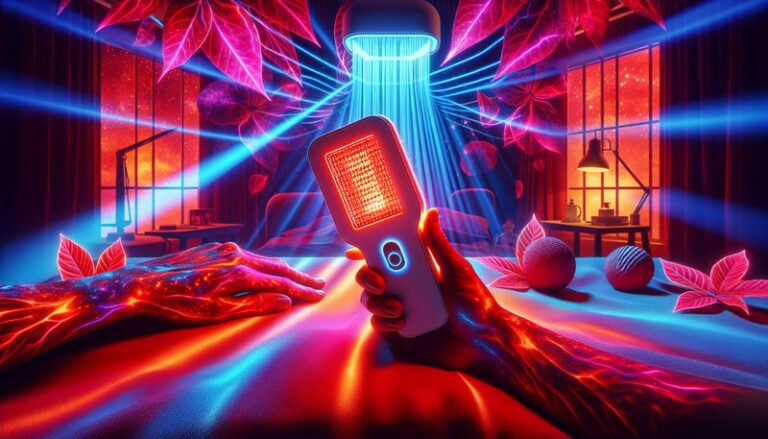When To Use Red Light Therapy?
Are you curious about the benefits of red light therapy and when it might be the right choice for you?
This article will explore red light therapy, its advantages, considerations for usage, and alternatives. Whether you’re looking to alleviate pain, improve skin health, or enhance muscle recovery, understanding when and how to utilize this therapy will help you harness its potential benefits effectively.
See what we think about Can Red Light Therapy Rash?
Key Takeaways
- Red light therapy is effective for various conditions, including skin issues, pain management, and muscle recovery.
- Safety precautions are vital, as improper use can lead to ineffective or harmful results.
- Various alternatives exist that can complement or replace red light therapy based on individual needs and circumstances.
What is Red Light Therapy?
Red light therapy (RLT) involves the exposure of the skin to low-wavelength red light, typically between 600 to 660 nanometers. It is a form of phototherapy that aims to promote healing and reduce inflammation by stimulating cellular processes.
RLT works by penetrating the skin’s surface, where it interacts with mitochondria—the powerhouse of the cell—enhancing energy production (ATP) and initiating various cellular repair and regeneration processes. Common applications include skin rejuvenation, pain relief, and muscle recovery following physical activity.
Mechanism of Action
The science behind red light therapy lies in its ability to trigger biological responses within the body. Research suggests that when skin cells absorb red light, they produce more ATP, leading to enhanced cellular function. This process can help improve circulation, reduce oxidative stress, and promote tissue repair.
What are the Benefits of Red Light Therapy?
Red light therapy offers an array of advantages, targeting physical conditions while promoting overall wellness. Here are a few notable benefits:
Skin Health Improvement
RLT has been shown to stimulate collagen production, reduce wrinkles, and help with conditions like acne and psoriasis. Many users report visibly clearer and smoother skin after consistent sessions.
Pain Relief and Inflammation Reduction
For individuals suffering from chronic pain conditions like arthritis, red light therapy can provide relief by reducing inflammation and promoting tissue healing. Studies indicate significant improvements in pain levels and mobility post-treatment.
Enhanced Muscle Recovery
Athletes often turn to red light therapy to expedite muscle recovery after rigorous workouts. RLT can reduce muscle soreness and stiffness, allowing for a quicker return to training.
Additional Benefits
- Improved wound healing: RLT can accelerate the healing process for various wounds by enhancing blood flow and cellular regeneration.
- Hair growth stimulation: Some evidence suggests RLT may help improve hair density in individuals suffering from hair loss or thinning.
- Mood and sleep enhancement: There is potential for red light therapy to aid in improving circadian rhythms and overall sleep quality.
Is it Possible to Use Red Light Therapy at Home?
Yes, many devices available on the market allow individuals to safely perform red light therapy at home. Portable options range from handheld devices to full-body panels, catering to different needs and preferences.
What are the Advantages of Home Use?
Using red light therapy at home can be convenient and cost-effective. You can schedule sessions around your routine without the need for professional appointments. Many find that they can maintain consistency in their treatments, leading to more pronounced results.
What are the Disadvantages of Home Use?
While home devices have their benefits, they might not provide the same intensity or wavelength depth as professional treatments. There’s also a risk of improper usage or inadequate protective measures, which can lead to ineffective or negative outcomes.
What are the Things to Consider Before Using Red Light Therapy?
Before starting red light therapy, there are several essential considerations that should be evaluated to ensure safe and effective treatment.
Consult with a Healthcare Professional
It’s advisable to consult with your healthcare provider, especially if you have underlying health conditions or are using medications that might affect sensitivity to light.
Device Quality and Specifications
Not all red light therapy devices are created equal. Investigate the specifications of the device, such as wavelengths emitted and power density, to ensure it meets the requirements for effective treatment.
Treatment Duration and Frequency
Understanding the recommended treatment duration and frequency is crucial for achieving desired results. Start with suggested guidelines and adjust based on your body’s response.
Additional Considerations
- Skin Sensitivity: Assess your skin type, especially if you have conditions that may react adversely to light.
- Individual Goals: Determine what you wish to achieve with red light therapy to tailor your approach and expectations effectively.
- Lifestyle Compatibility: Ensure the treatment schedule fits seamlessly into your daily routine for consistency.
What are the Alternatives to Red Light Therapy?
If red light therapy does not seem like the right fit, several alternatives can provide similar benefits.
Cold Laser Therapy
Cold laser therapy uses low-level laser light for pain relief and tissue healing. It shares similar mechanisms to red light therapy but employs different technology.
Ultrasound Therapy
Often used in physical therapy, ultrasound therapy employs sound waves to promote tissue healing, pain relief, and muscle relaxation.
Interferential Current Therapy
This electrotherapy uses electrical currents to stimulate muscles and alleviate pain, serving as a non-invasive treatment option for various conditions.
Additional Alternatives
- Cryotherapy: Utilizes extreme cold to reduce inflammation and promote recovery.
- Massage Therapy: Enhances blood flow and relaxes muscles, aiding recovery and overall wellness.
- Physical Therapy: Personalized rehabilitation programs can address specific concerns more holistically.
Conclusion: Is it Recommended to Use Red Light Therapy?
Red light therapy can be a valuable tool for various health and wellness purposes. With numerous benefits ranging from improved skin health to pain relief and enhanced recovery, it can be suitable for many individuals. However, it’s essential to consider personal health conditions, the quality of devices, and specific treatment goals. Consulting a healthcare professional can help tailor a safe and effective red light therapy regimen based on individual needs.
Discover the details in Duration of Red Light Therapy
Frequently Asked Questions
What skin conditions can red light therapy help with?
Red light therapy has shown efficacy in treating acne, psoriasis, eczema, and signs of aging such as wrinkles and fine lines. It promotes healing and cellular regeneration.
How often should I use red light therapy for the best results?
Most recommendations suggest starting with 3-5 sessions per week. However, frequency may vary based on individual goals and response to treatment.
Are there any side effects associated with red light therapy?
Generally, red light therapy is considered safe, but potential side effects may include mild skin irritation or sensitivity. Adhering to recommended treatment guidelines can mitigate these risks.
Can I use red light therapy if I have sensitive skin?
People with sensitive skin should consult with a healthcare provider before starting red light therapy. Patch testing and starting with lower intensity settings are advisable.
How long does it take to see results from red light therapy?
Some individuals may notice improvements after a few sessions, particularly for pain relief, while others may require weeks of consistent application for skin health benefits.





